Our RV adventures started in 1999 with a 32-foot Class A gas motorhome, then in 2000, a 39-foot Class A diesel pusher. The diesel pusher was with us for 18 years, ordered exactly as we wanted (well, the way I wanted). It was to be “our last motorhome.” Uh-huh. Our dogs and their owners were very attached to this coach, and it drove very smoothly except on rough roads where everything rattled and squeaked. It carried 100 gallons of fuel (I could only seem to get 80 gallons into it). Traveling down the road at any speed, uphill or down, towing or not, fuel consumption always worked out to 7 miles per gallon. The cavernous underbelly could hold so much stuff. So much stuff, in fact, that we forgot was even there many years later. No matter; it came along for the ride!
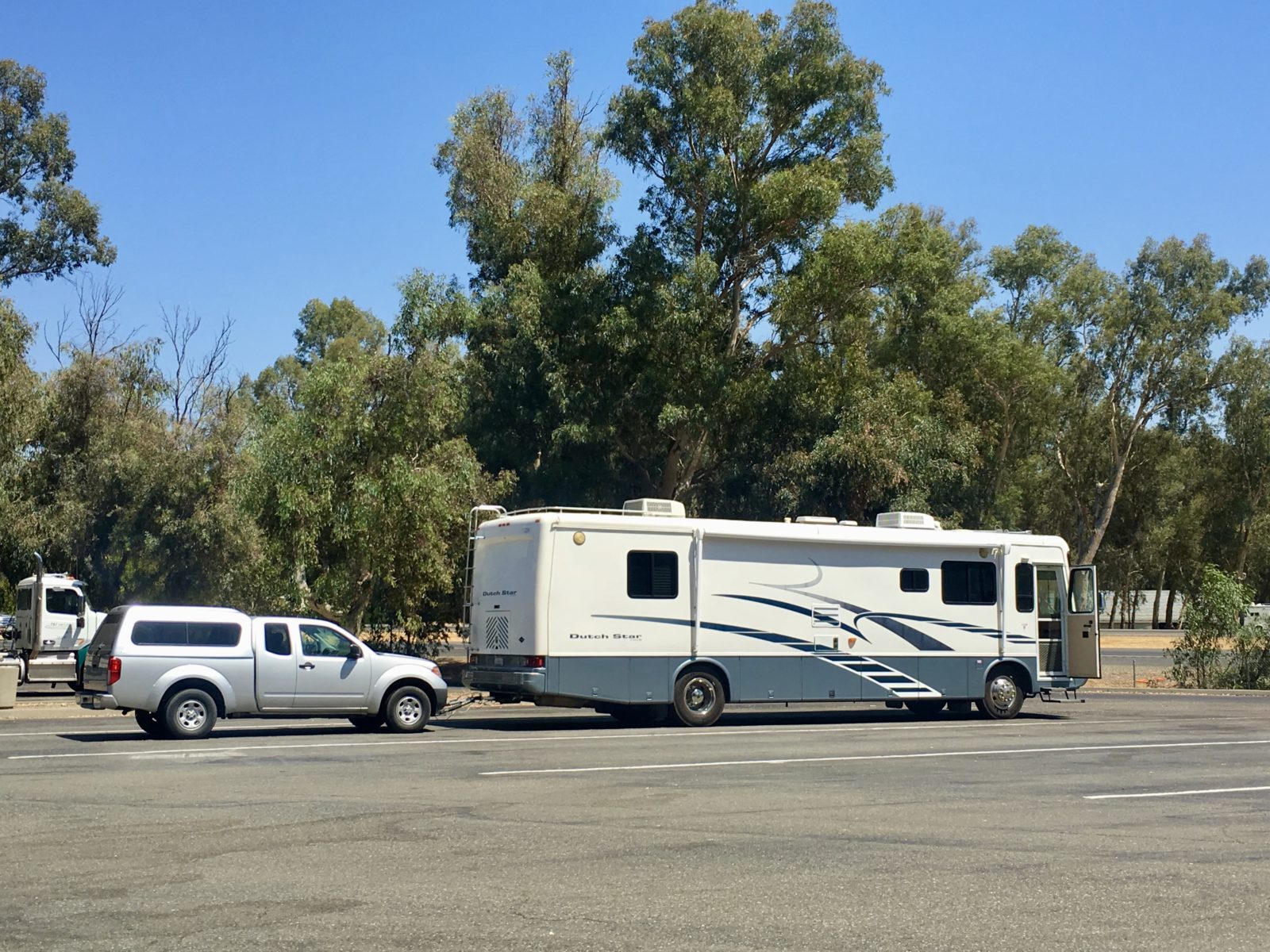
Over time, we began to notice something. We were limited to mostly commercial RV parks, truck stops for fuel, and the need to really plan our trip routes. So many county, state, and national parks were off-limits due to length. I began to think, hmmm, if only that bedroom in the back could be chopped off as it didn’t get used for that many hours in a day. That would make a big difference in length, maybe 9 feet or so! However, this wasn’t really a viable option because the back end would be pretty drafty without the bedroom. Besides, even 30 feet was too long for many parks.
After 18 years of owning a diesel pusher, I had grown weary of trying to maneuver in tight spaces, with the complexity and high cost of maintenance of a heavy-duty diesel drivetrain and chassis, the difficulty in finding a storage facility, the big task of washing it on the outside and cleaning it on the inside. The prospect of a van-based motorhome was attractive. It would be easy to drive and lower maintenance costs, store it at home, and, of course, have the flexibility to go to many more parks. Parks that were within beautiful natural settings.
Then, in 2018, I saw an LTV Unity on the internet. It was a Murphy Bed floorplan. This was a 25-foot motorhome with a spacious living area that transformed from sofa to dinette to big bed. As a bonus, the bathroom was bigger than the one in our diesel pusher! We also looked at the other Unity and Wonder floorplans. They all had great features and variations while still fitting into that state park-friendly length!
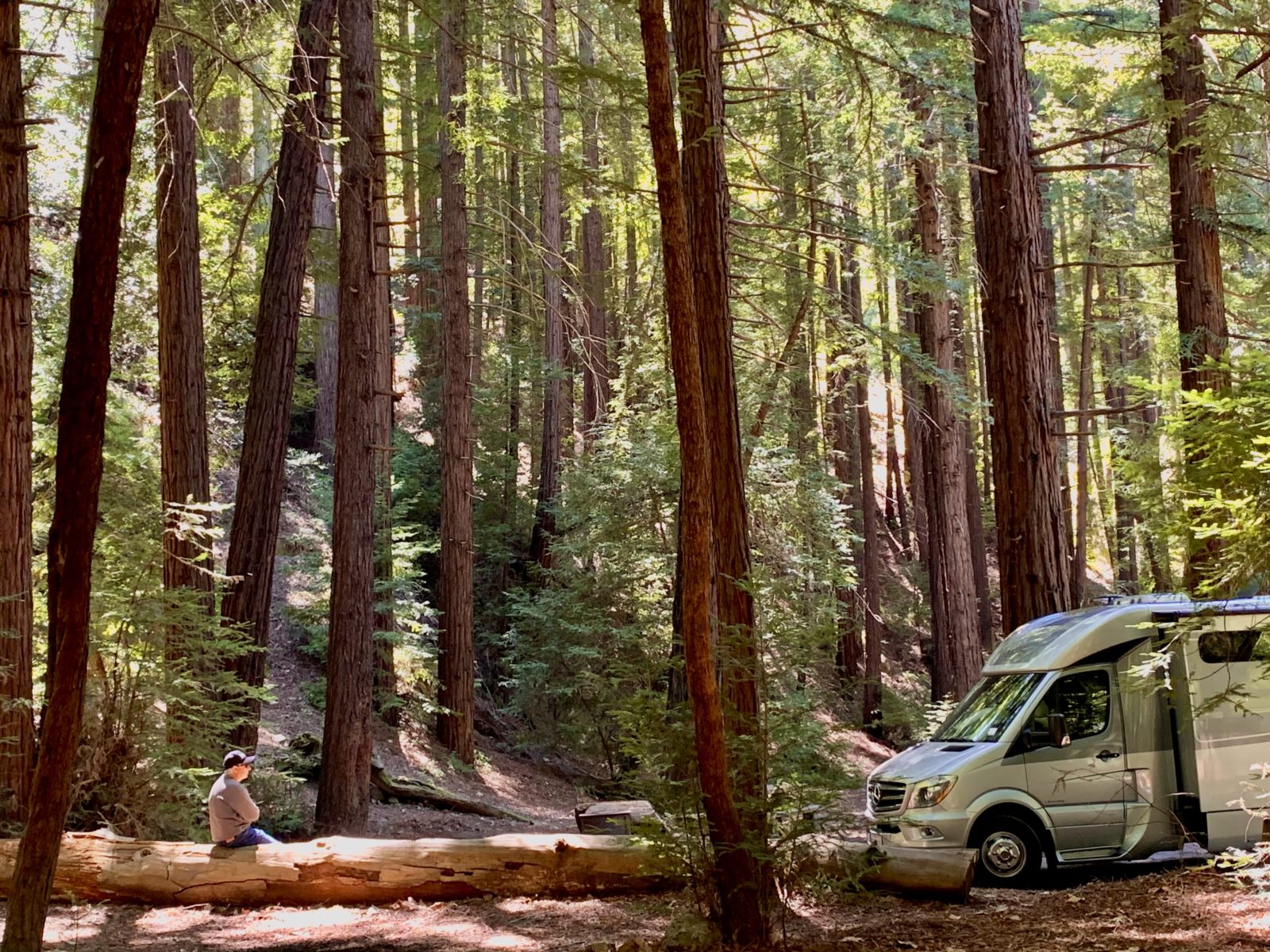
I had seen more conventional Class C’s, but they were really more suited for families with young children. They were very tall, sometimes quite long, often plain and, well, a bit boring looking. Coming from a well-equipped diesel pusher, we were looking for certain quality and amenities that weren’t available in many “shoebox” Class C’s. We would lose some livability compared to a 39-foot coach, but we didn’t want to go backward in quality. LTV models seemed to have all the amenities of our pusher in a smaller form factor. Yes, you need to “maneuver” around each other and pets sometimes, but it quickly becomes second nature. I find that my wife giving me an elbow in the ribs when I’m in the way is highly effective.
I am still blown away by how much storage our Unity Murphy Bed provides both inside and outside. It’s really impressive. Some Class C’s seem to have a lot of storage, but you quickly realize that they are limited on how much cargo they can carry due to weight limitations. Our Unity can carry over 1,800 pounds of people and stuff. This compares very favorably to most conventional Class C’s.
We were used to towing a vehicle with our pusher. I was very happy to learn that our Unity could tow 4,000lbs. My Jeep could come with us when needed! Yet, most regular fueling stations were still an option. We get 17 miles per gallon when not towing; even when we do, the fuel mileage is still double that of our pusher. Towing is not much different than with the pusher, except you can feel the tow vehicle’s presence a bit more, and braking feels safe and secure by adding an auxiliary braking system on the Jeep.
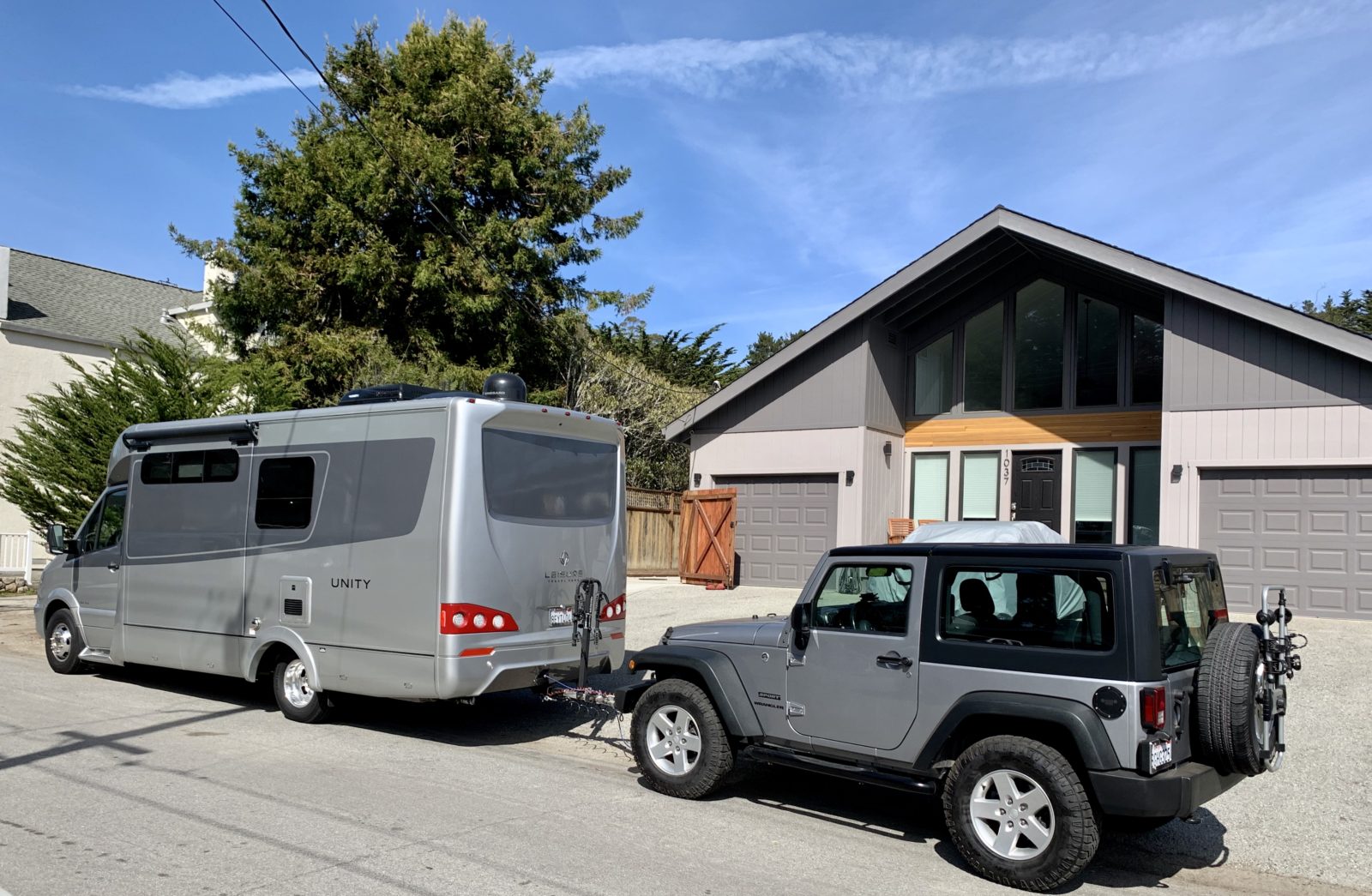
While boondocking in a pusher is certainly an option, there are fewer real-world places to do so than with a 25-foot RV. Diesel pushers really aren’t made for exploring dirt roads, especially if there isn’t a big area to turn around! Speaking of which, having to back up a pusher into a campsite is the leading cause of RVing stress amongst couples. Don’t ask me how I know.
List of Pros and Cons for Pushers and LTVs:
Diesel Pusher Pros
- Lots of room, multiple slide-outs, and lengths from 34 feet to 45 feet.
- Lots of storage, a large basement area, and numerous interior cabinets and closets.
- Heavy vehicles yield a smooth ride due to air ride suspension and weight.
- Quiet drive due to engine in the rear.
- Often has a large, residential-style refrigerator.
- You can have a dishwasher, washer, and dryer.
- Can have a bath and a half floorplan.
- Large galley area.
- Large fuel tank and holding tanks.
- Good cargo and people-carrying capacity for most models.
Diesel Pusher Cons
- Expensive to purchase.
- Expensive to maintain.
- Poor fuel economy.
- Difficult to store.
- Difficult to maneuver and park. Hard to sightsee in town with.
- Difficult to fit into normal fueling stations.
- Many parks and campgrounds don’t allow their large sizes.
- Difficult to level.
- It is labor-intensive to wash on the outside and more work to clean the interior.
LTV Pros
- Less expensive to purchase.
- Compact length for ease of maneuverability and flexibility to fit in most parks and campgrounds.
- Easy to drive.
- Less expensive to maintain.
- Lower vertical clearance.
- Less need to tow.
- Easier to level.
- Less complex mechanically and electrically.
LTV Cons
- Less interior space.
- Smaller fuel tank and holding tanks.
- Less sleeping capacity.
- Smaller galley.
- Smaller bathrooms except for floorplans like the Wonder Front Twin Bed, Unity Murphy Bed, and Wonder and Unity Murphy Bed Lounge.
- Less basement storage and interior storage.
I’m sure there are a few I’ve left out, but after living with a 39-foot pusher for 18 years, we really don’t miss very much about it. Our Unity does what we need it to do comfortably and more efficiently. The freedom to be able to fit into amazing parks and campgrounds that were previously off-limits is as wonderful as we had hoped. The LTV is simpler to maintain and operate, and we love storing it at home. The big improvement in fuel mileage is more welcome than ever, along with less costly chassis/drivetrain maintenance. All in all, our Unity has delivered on every level we had hoped for. Maybe this will truly be our last motorhome! Uh-huh.
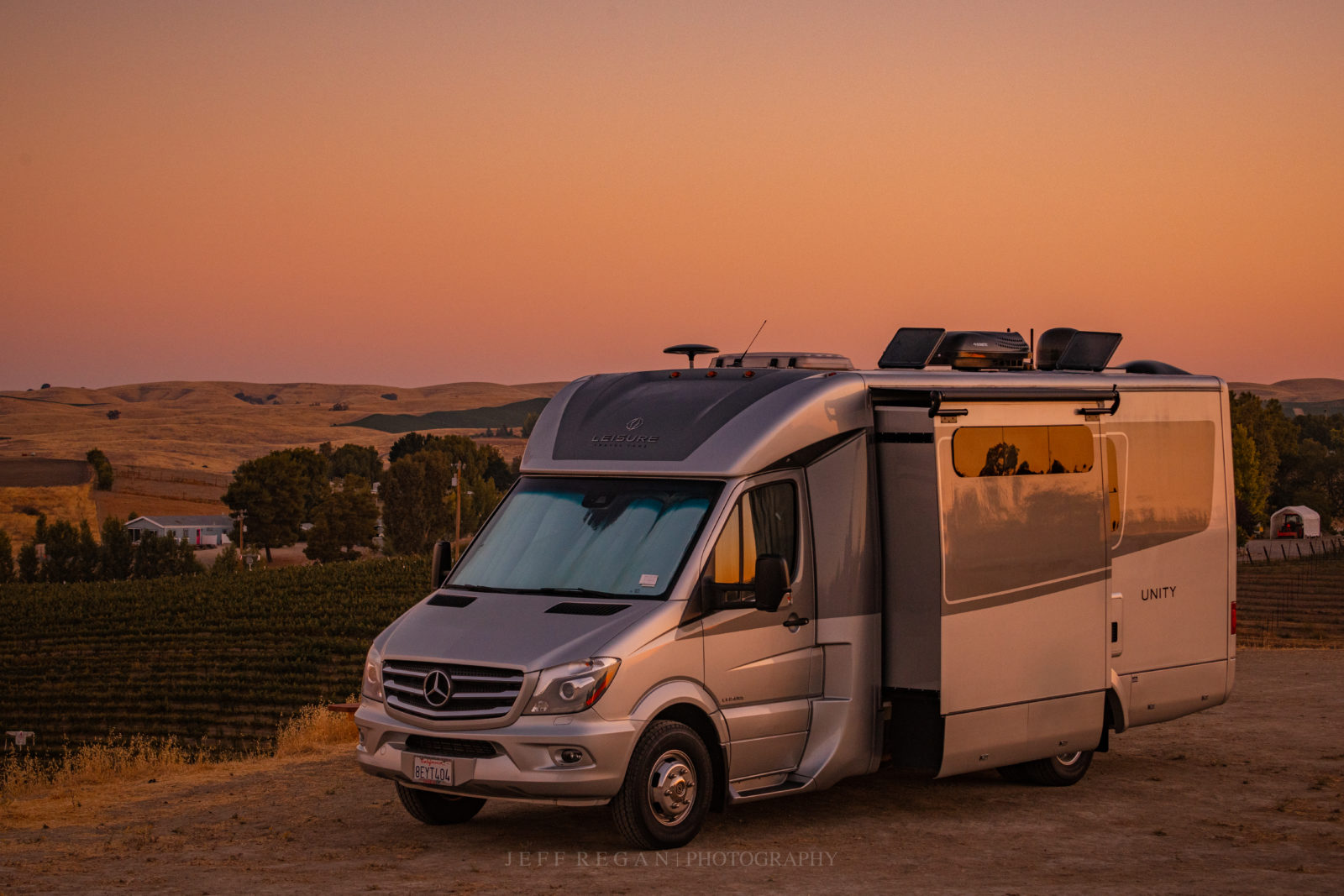


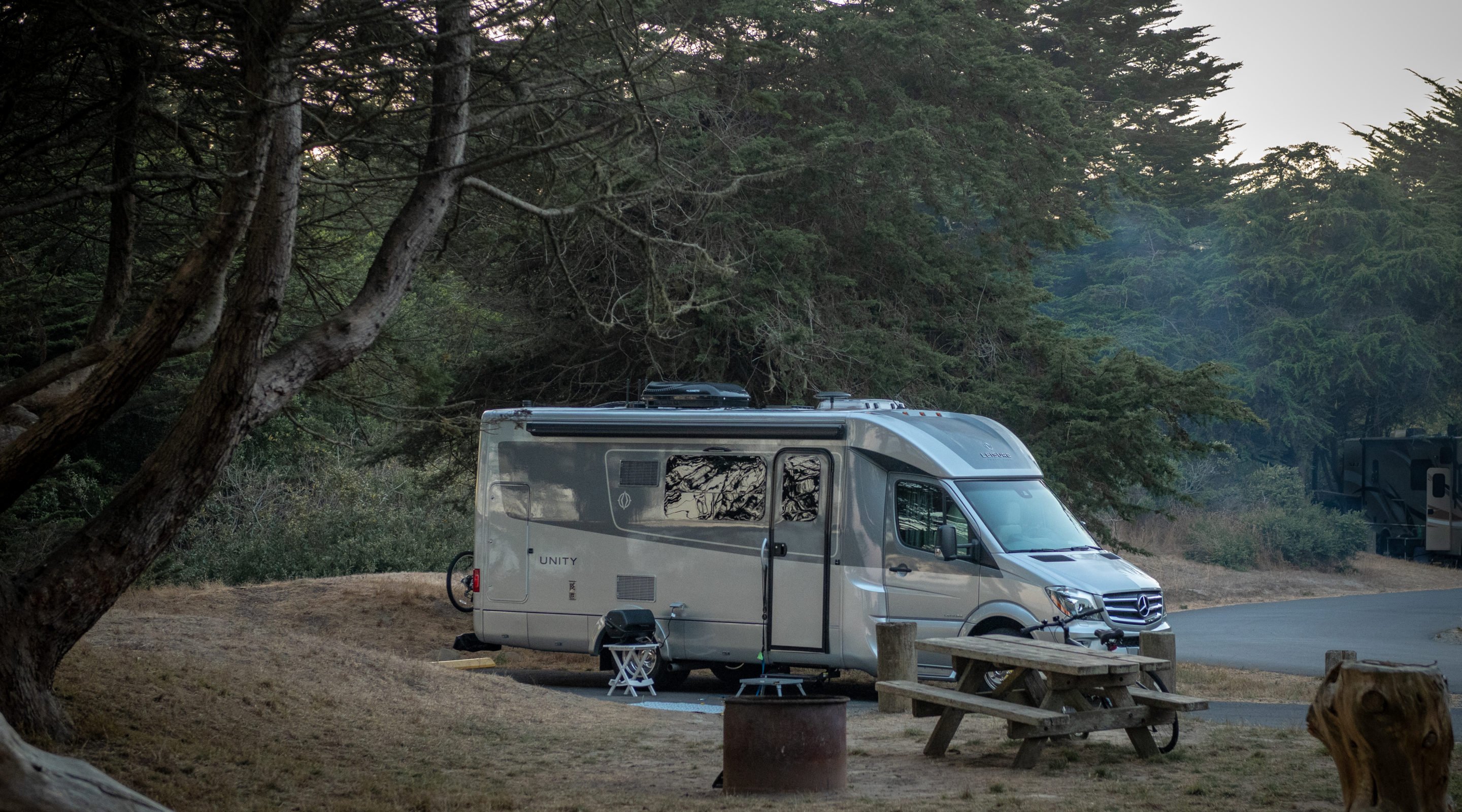


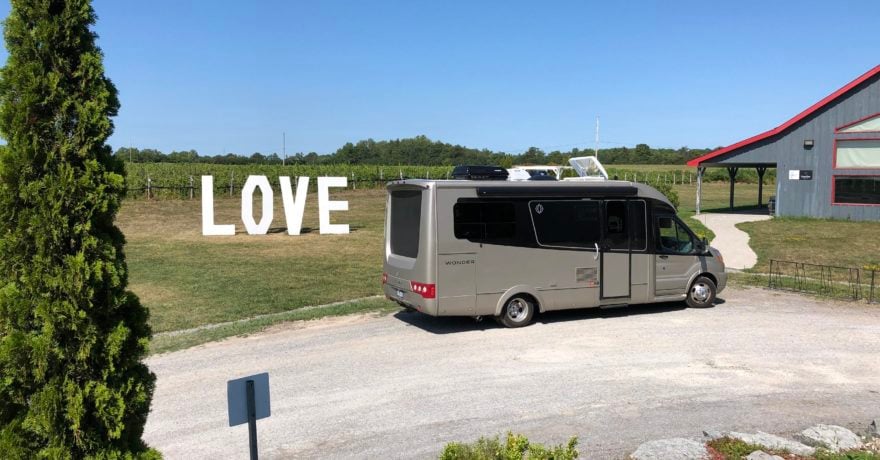
Comments